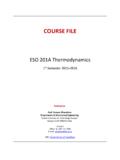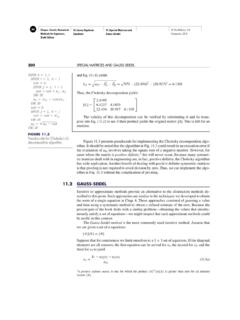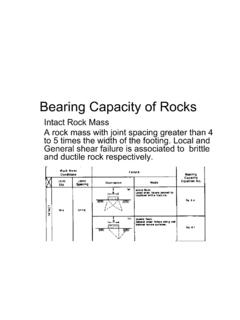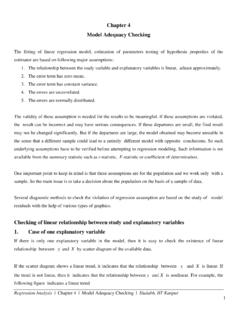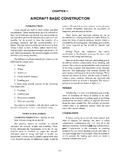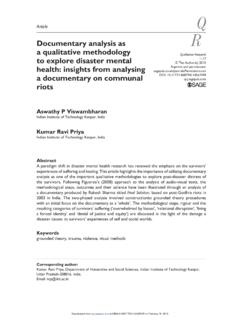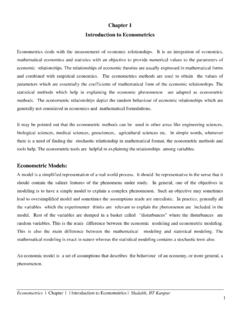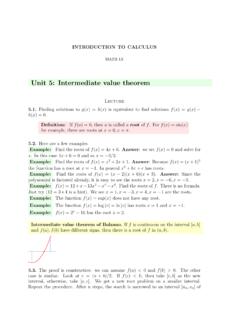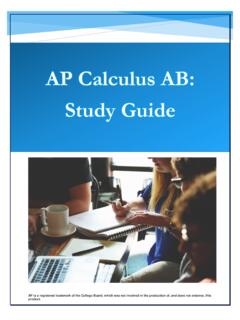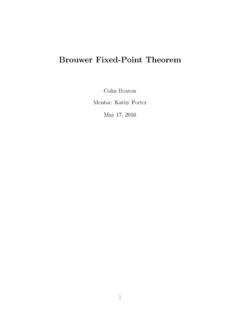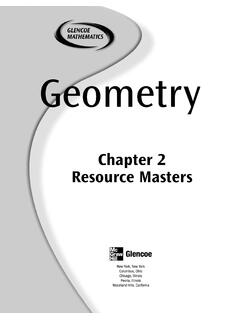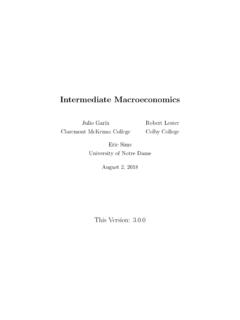Transcription of Lecture 8 : Fixed Point Iteration Method, Newton’s Method
1 1 Lecture 8 : Fixed Point Iteration Method , Newton s MethodIn the previous two lectures we have seen some applications of the mean value theorem . We nowsee another this Lecture we discuss the problem of finding approximate solutions of the equationf(x) = 0.(1)In some cases it is possible to find the exact roots of the equation (1), for example, whenf(x) isa quadratic or cubic polynomial. Otherwise, in general, one is interested in finding approximatesolutions using some (numerical) methods. Here, we will discuss a Method called Fixed pointiteration Method and a particular case of this Method called Newton s Point Iteration Method :In this Method , we first rewrite the equation (1) in the formx=g(x)(2)in such a way that any solution of the equation (2), which is a Fixed Point ofg, is a solution ofequation (1). Then consider the following 1:Start from any pointx0and consider the recursive processxn+1=g(xn), n= 0,1,2.
2 (3)Iffis continuous and (xn) converges to somel0then it is clear thatl0is a Fixed Point ofgandhence it is a solution of the equation (1). Moreover,xn(for a large n) can be considered as anapproximate solution of the equation (1).First let us illustrate whatever we said above with an 1:We know that there is a solution for the equationx3 7x+2 = 0 in [0,1]. We rewritethe equation in the formx=17(x3+ 2) and define the processxn+1=17(x3n+ 2).We have alreadyseen in a tutorial class that if 0 x0 1 then (xn) satisfies the Cauchy criterion and hence itconverges to a root of the above equation. We also note that if we start with (for example)x0= 10then the recursive process does not is clear from the above example that the convergence of the process (3) depends ongandthe starting pointx0. Moreover, in general, showing the convergence of the sequence (xn) obtainedfrom the iterative process is not easy.
3 So we ask the following :Under what assumptions ongandx0, does Algorithm 1 converge ? When does thesequence (xn) obtained from the iterative process (3) converge ?The following result is a consequence of the mean value :Letg: [a, b] [a, b]be a differentiable function such that|g (x)| <1for allx [a, b].(4)Thenghas exactly one Fixed pointl0in[a, b]and the sequence(xn)defined by the process (3), witha starting pointx0 [a, b], converges (*):By the intermediate value propertyghas a Fixed Point , sayl0. The convergence of(xn) tol0follows from the following inequalities:|xn l0|=|g(xn 1) g(l0)| |xn 1 l0| 2|xn 2 l0|.. n|x0 l0| a Fixed Point then|l0 l1|=|g(l0) g(l1)| |l0 l1|<|l0 l1|This implies thatl0=l1. Example 2 :(i) Let us take the problem given in Example 1 whereg(x) =17(x3+ 2).Theng: [0,1] [0,1] and|g (x)|<37for allx [0,1]. Hence by the previous theorem the sequence(xn) defined by the processxn+1=17(x3n+ 2) converges to a root ofx3 7x+ 2 = 0.
4 (ii) Considerf: [0,2] Rdefined byf(x) = (1 +x)1 thatfmaps [0, 2] onto |f (x)| 15<1 forx [0,2]. By the previous theorem the sequence (xn) defined byxn+1= (1 +xn)1/5converges to a root ofx5 x 1 = 0 in the interval [0,2].In practice, it is often difficult to check the conditionf([a, b]) [a, b] given in the previoustheorem. We now present a variant of theorem :Letl0be a Fixed Point ofg(x). Supposeg(x)is differentiable on[l0 , l0+ ]forsome >0andgsatisfies the condition|g (x)| <1for allx [l0 , l0+ ].Then thesequence(xn)defined by (3), with a starting pointx0 [l0 , l0+ ], converges :By the mean value theoremg([l0 , l0+ ]) [l0 , l0+ ] (Prove !). Therefore, theproof follows from the previous theorem . The previous theorem essentially says that if the starting Point is sufficiently close to the fixedpoint then the chance of convergence of the iterative process is :Ifgis invertible thenl0is a Fixed Point ofgif and only ifl0is a Fixed Point ofg view of this fact, sometimes we can apply the Fixed Point Iteration Method forg 1instead understanding, considerg(x) = 4x 12 then|g (x)|= 4 for allx.
5 So the Fixed Point iterationmethod may not work. However,g 1(x) =14x+ 3 and in this case|(g 1) (x)|=14for s Method or Newton-Raphson Method :The following iterative Method used for solving the equationf(x) = 0 is called Newton s 2 :xn+1=xn f(xn)f (xn)n= 0,1,2, ..It is understood that here we assume all the necessary conditions so thatxnis well defined. If wetakeg(x) =x f(x)f (x)then Algorithm 2 is a particular case of Algorithm 1. So we will not get in tothe convergence analysis of Algorithm 2. Instead, we will illustrate Algorithm 2 with an 3:Supposef(x) =x2 2 and we look for the positive root off(x) = 0. Sincef (x) = 2x,the iterative process of Newton s Method isxn+1=12(xn+2xn), n= 0,1,2, ..We have alreadydiscussed this sequence in a tutorial class. (Apparently, this process for calculating square rootswas used in Mesopotamia before 1500 BC.)Geometric interpretation of the iterative process of Newton s Method :Suppose we havefound (xn, f(xn)).
6 To findxn+1, we approximate the graphy=f(x) near the Point (xn, f(xn)) bythe tangent :y f(xn) =f (xn)(x xn).Note thatxn+1is the Point of intersection of the x-axisand the tangent atxn.
